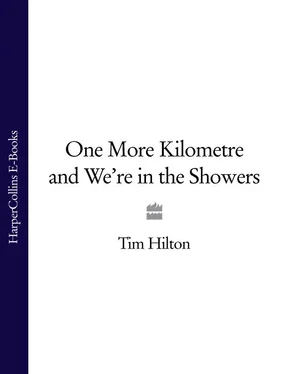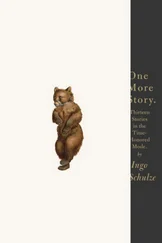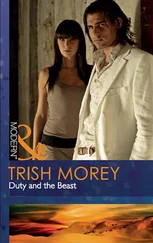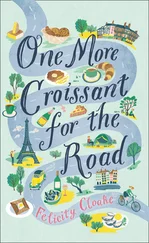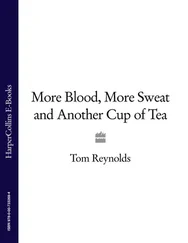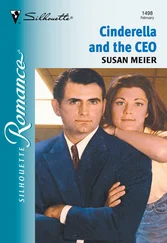It was nearly a decade since Percy had ridden in his first world championship, and he had never had enough racing to satisfy him. He was a man of physical prowess, sometimes shown in unconventional ways. In Wolverhampton pubs he won pint after pint by jumping from a squatting position onto table tops. Percy was a rough leader of men – the kind you can imagine in command of an army unit – and was frustrated at not fighting in the war. He remained in Wolverhampton in a reserved capacity as a cycle mechanic. Percy was also a frame builder. May I tell connoisseurs that I have ridden a Percy Stallard frame. It was lovely. The owner wouldn’t sell it to me.
Stallard’s qualities were unrecognised in the Doughty Street headquarters of the NCU. He was provincial, had a lowly social status and was without skill when it came to writing letters. I think that the NCU officials may have been deceived by Percy’s Wolverhampton accent, which gave a note of wonderment to his voice, as though he could not fully believe in the existence of a quite simple fact that he himself was describing. This accent, combined with his unlovely features, gave some people the impression that he was one of society’s and nature’s underlings.
That was wrong. Percy Stallard was as revolutionary as Wat Tyler, an opponent of the hierarchy (any hierarchy) who would never give up and never admit defeat. And all he wanted to do, in the spring of 1942, was to organise a cycle road race along the lines of the continental racing he had briefly tasted. Letter after letter in Percy’s uneducated hand went to the NCU, asking for co-operation or at least permission. Always the answer was no, just no.
Percy Stallard would not obey. He decided to go ahead with a race. The birthplace of his plan, and therefore of the League, was a remote farmhouse at Little Stretton in Shropshire. This village is 30–40 miles west of Wolverhampton, in a river valley before the land rises sharply towards the Welsh border. There ought to be a commemorative plaque on the farm. I have made a pilgrimage but could not locate the building. Veterans such as myself can recall the nature of such places. It was one of those homes recommended by the Cyclists Touring Club (‘appointed’, in CTC language) where cyclists could find a cheap place of rest and, with luck, some food. They slept in makeshift dormitories and washed under the farmyard tap.
Racing men were gathered at this farm during Easter of 1942 because they were to compete in the Wolverhampton RCC’s hill climb. There was a course of a mile and three-quarters on the unmetalled Burway Hill, which goes up the Long Mynd. A nice little event, but all the riders wanted more. In the farmhouse kitchen Stallard led the future agitation. It was ridiculous that their races should be in remote places and held in secret. There were massed-start events in continental countries, applauded by spectators, even in wartime. Why not in Britain?
Repeated applications to the NCU were rejected. What explains their mindset, the lack of sympathy and indeed the folly of their prohibition? I imagine that they liked being in charge, feared a vulgarisation of cycling, didn’t like Percy Stallard, and wished to put down the Black Country bighead. The enemies of ‘Stallard’s race’, as they called it, referred to its contravention of the genteel spirit of their pastime. They had only one argument that made sense: that if massed-start racing were to be seen on public roads, then the government would be inclined to ban all cycle sport.
Stallard had foreseen this argument. His proposed race was to cover the 59 miles between Llangollen and Wolverhampton. He secured the co-operation of the chief constables of both Shropshire and Staffordshire, having assured them that the forty riders were experienced racing men who would obey the rules of the road. Any profits from the race would go to a police-force charitable fund. Stallard also provided a programme, a press car and publicity via the Wolverhampton Express and Star.
The race took place on 7 June 1942, animated by the same men who had banded together in the Shropshire farmhouse. There were no incidents. An exciting sprint finish in Wolverhampton’s Park Road was cheered by a crowd of 2,000 people. Two local riders were first and second, Albert Price of the Wolverhampton RCC crossing the line in front of Chris Anslow of the Wolverhampton Wheelers. The event had been a success in every way.
The NCU’s response was to suspend, sine die , Stallard, all the riders in the race and all the officials named in the programme: three dozen of the best wheelmen in the country were forbidden to race again. People immediately resigned from the NCU in protest. Some Midlands clubs formed a new organisation, the Midland League of Racing Cyclists. Further leagues were formed in the north and in London, later amalgamating to form the BLRC. In November the NCU, now joined by the RTTC, issued the following warning: ‘As from today’s date, any person or club associating itself with the British League of Racing Cyclists or any of its constituent parts will be suspended.’
The committee of the NCU simply did not understand the wishes of its membership. The same went for the RTTC. Neither body attempted diplomacy, and therefore could not stem the flow of defections. By 1943 about 450 people had joined the League in defiance of the NCU’s threat of suspension and in scorn of the editorials in Cycling , in which they were regularly condemned. If their own club had taken the NCU side they resigned, often to form new clubs. The BLRC gained further and further strength. Eighteen months after ‘Stallard’s race’ it had five regional sections and thirty affiliated clubs.
The sudden rise of the BLRC has something in common with the speedy formation of the Clarion clubs in the 1890s. A spirit was everywhere, but dormant. All that was needed for revolution was a catalyst or pioneer, whether in the form of Blatchford’s newspaper or in the person of the obstinate Percy Stallard.
A difference between the Clarion movement and the rise of the BLRC is that the first led to fellowship, the second to division. After the summer of 1942 there was schism in club after club. Old friends were no longer friends. People who had never met regarded each other as enemies. Sons of cyclists were told by their fathers to avoid certain other cyclists. A height of the wrangling was reached when servicemen came home after 1945. Let us imagine two cases. A young man returns from fighting and is not inclined to obey the edicts of old non-combatants in the NCU. So he becomes a Leaguer. Another war veteran returns to civilian life and finds that his beloved club has been torn to pieces by Leaguers. So he resents them, especially since they – like the NCU committees – had also not been combatants. He joins another club or loses interest altogether.
From 1945 to 1946 the League wished to send its members to race on the continent and – yes please! – to accept any invitation to enter a British team in European stage races. The problem for racing cyclists, who were neither linguists nor diplomats, was to get on to terms with the world’s governing body, the Union cycliste internationale. The UCI recognised the NCU as cycling’s governing body in Great Britain. How then was the BLRC to proceed?
Help came from the Belgian-born sister of Alec Taylor (2nd, Tour of Britain 1951, National Amateur Champion 1947). Miss Taylor went to Brussels at her own expense, for the League had no funds, to put the BLRC case. More assistance was given by Victor Berlemont, the landlord of the York Minster in Dean Street, Soho, always known as ‘the French pub’. This small bohemian bar had been the unofficial headquarters of the Free French during the war. Berlemont had an interest in cycle sport and was the UCI’s London consul. Victor’s son Gaston (who as a young man can be seen in Willi Ronis’s famous photograph of the pub, part of his record of the life of French people in England) inherited the York Minster after his father’s death in 1951.
Читать дальше
